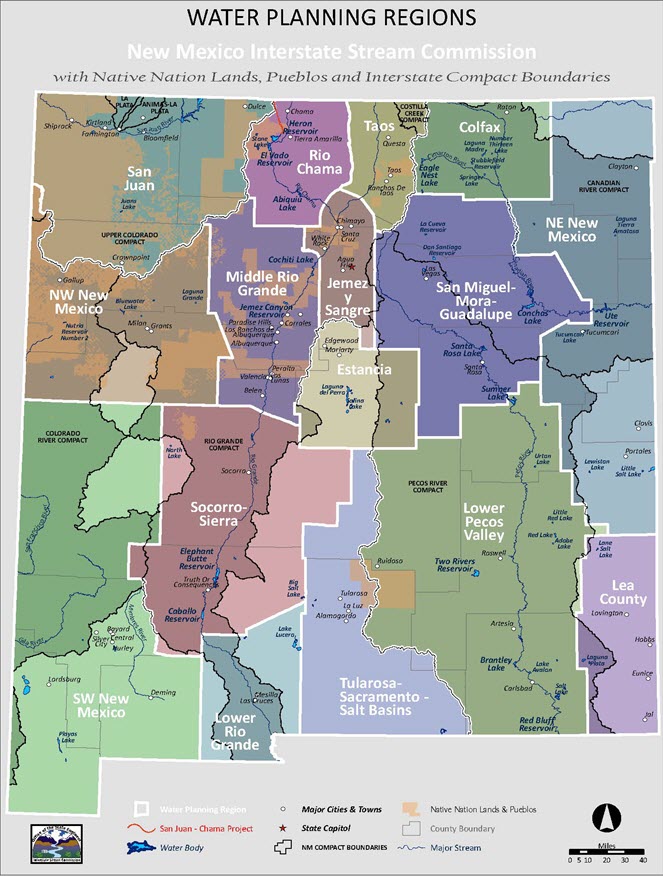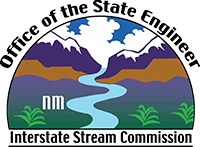Water Planning
- OSE Home
- About Water Planning
- Regional Water Planning (RWP)
Regional Water Planning
New Mexico is one of the driest states in the nation and opinions abound about how our limited water should be planned for, permitted, administered, and managed. Planning for a resilient water future is essential to sustaining communities in the southwest. The long history of water shortage and related water management in the area points to the difficulties of sharing a resource that is essential, but neither consistent nor abundant.
Reinvigorating Regional Water Security Planning in New Mexico
In 2023, The Water Security Planning Act, a law designed to reinvigorate regional water planning around the challenge of projected reductions in supply, passed the NM State Legislature with unanimous support. Implementation of this Act is part of the work of NMISC’s Water Planning Program.
The first steps in implementing the Act include developing and promulgating rules and guidelines to govern regional water planning. Rule promulgation is a proscribed process with notice requirements to provide opportunities for New Mexicans to weigh in on, and potentially change, proposed rules to ensure that those rules appropriately reflect the values and needs of the community.
In developing the rules and guidelines by which regional water planning will be conducted, the NMISC is using the opportunity to educate and inform New Mexicans about our water future, to be inclusive and respectful in expanding involvement in water planning, and to use transparency and accountability to develop broad support ahead of formal promulgation. If successful, this strategy will craft a set of coordinated and broadly supported rules, oriented toward the long view, that help to avoid opportunities during promulgation for minority opinions with effective policy advocacy to highjack a process intended for all New Mexicans.
Water Connects Us
New Mexico’s water brings life to the desert, and together, we can keep it that way. Despite the water shortages and challenges we will face in the years ahead, the solutions are here, in our people, our communities, and our state. The NMISC’s new water planning initiative is Main Stream New Mexico, a resource for water planning information, stories, and solutions driven by three principles: to inform New Mexicans of the fragility and future of our water systems, to connect NMISC and stakeholders, and to inspire active participation in water planning.
Water systems and how they are managed are generally not well understood. Main Stream New Mexico will increase public awareness and understanding of our state’s water realities, projections and the need to adapt for a drier and hotter future, and the water management options and constraints within which we operate.
Ultimately, the aim is to inspire active participation in effectively planning for and managing decreasing water availability in New Mexico. The intent of Main Stream New Mexico is building trust in water planning, empowering New Mexicans to design and implement locally effective water policy, and to engage in community-wide efforts to balance water use and availability in a reorganizing system.
Regional Water Plans
Help Main Stream New Mexico Connect with New Mexicans
Please visit the Main Stream New Mexico website at www.mainstreamnm.org website where you can sign up to be notified of coming engagement opportunities, find documents that inform water planning including science and technical reports, and eventually share stories and provide input on the development of rules and guidelines.

